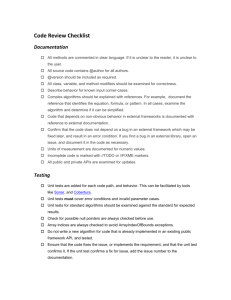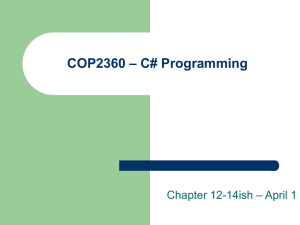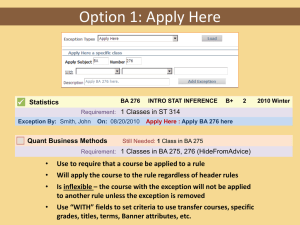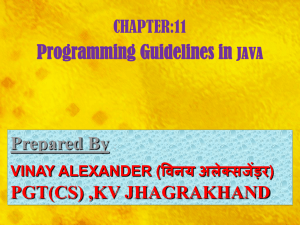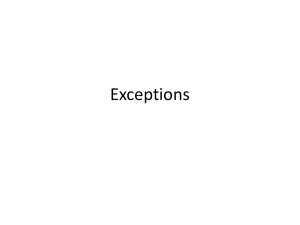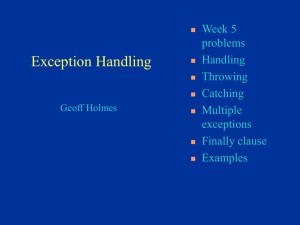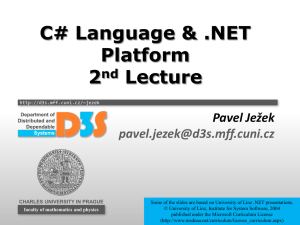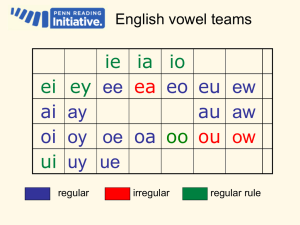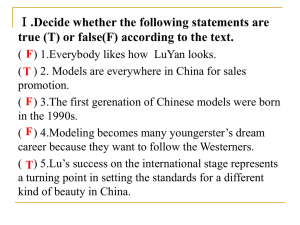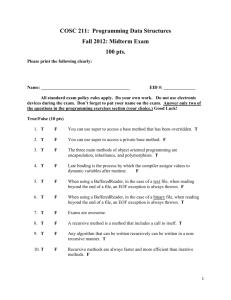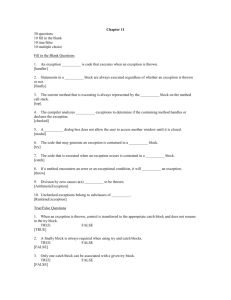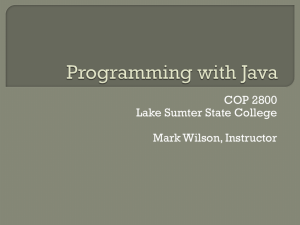IntroToCS - Avon High School Tech Crew
advertisement
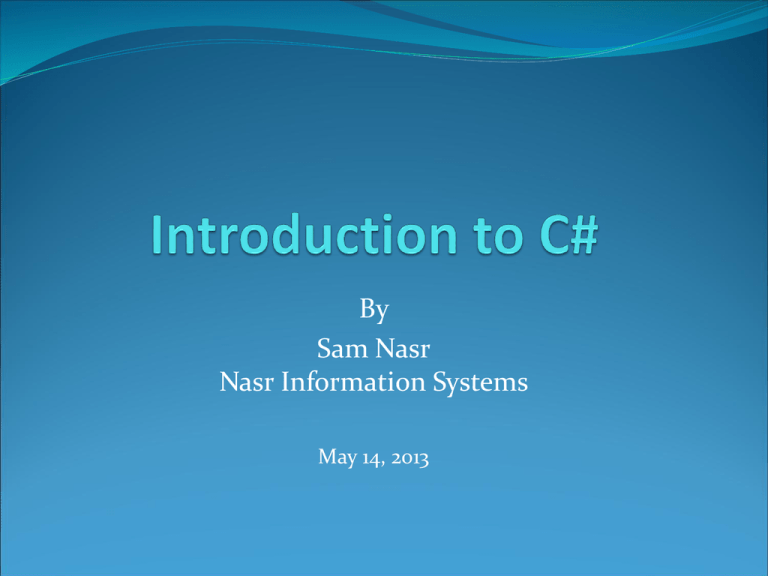
By
Sam Nasr
Nasr Information Systems
May 14, 2013
Agenda
Introduction
What is .Net?
.Net Framework
Advantages of .Net/CLR
Visual Studio
C# Syntax
Introduction
Sam Nasr, MCAD, MCTS, MCT
Software Developer since 1995
Nasr Information Systems
President Cleveland C#/VB.Net User Group
President Cleveland WPF User Group
President .Net Study Group
INETA Mentor – Ohio
Author - Visual Studio Magazine
What is .Net?
New programming methodology
Multiple Languages (VB.Net, C#, J#, etc.)
IL
JIT Compiler
Primary Parts:
1. .Net Framework
2. Common Language Runtime (CLR)
- JIT Compiler
RTM: v4.5, since 2000
.Net Framework
A set of approximately 3500 classes.
Classes are divided into namespaces grouping similar classes.
For organization, each class belongs to only one namespace.
Most classes are lumped into a name space called System
System.Data: DB access
System.XML: reading/writing XML
System.Windows.Forms: Forms manipulation
System.Net: network communication.
.Net Framework
Supports Web Standards
HTML
XML
XSLT
SOAP
WSDL (Web Services)
ADO.Net: ActiveX Data Objects, EF
ASP.Net: Active Server Pages
Command Line Tools: ILDASM, ILASM, SN, etc.
Advantages of .Net
Write once, run everywhere with .Net FW
Multiple programming languages (20+)
Coding Reduction
Controls
Template projects
IIS/Cassini support
Ease of Deployment
Security Features
Visual Studio
IDE for development
Templates for: Console app, Web Service, Win Service, ASP.Net, Class
Libraries
Security tools
VS Web Server (Cassini)
Application Testing
Team Suite for project management
Express versions (free)
The C# Programming Language
Microsoft proprietary language
OO Language
High-level Language
Programs must be compiled before executed.
Case sensitive
Part of the .NET Framework, used for:
ASP.Net
Console Apps
WF
WCF
WPF
MVC
Elements of a C# Program
Data Types
Types of data in a program. Common data types are int (integers),
char (single character value), float (floating point values).
Variables
Provides temporary storage during program execution.
int number = 10;
Constants
Data fields whose value cannot be modified.
const int i = 10;
Arrays
A collection of items in which each item can be accessed by a unique
index.
int[] numbers = { 1, 2, 3, 4, 5 };
Operators
Symbols that specify which operation to perform on operands before
returning a result.
Methods
Methods are code blocks containing a series of statements. Methods
can receive input via arguments and can return a value to the caller.
Structure of a C# Program
The if-else Statement
The if-else statement allows your program to perform one action if the
Boolean expression evaluates to true and a different action if the
Boolean expression evaluates to false.
Demo
Exception Handling
An exception is an unexpected error condition that occurs
during program execution.
When exception occurs, the runtime creates an exception
object and “throws” it.
Unless you “catch” the exception, the program execution
will terminate.
Exceptions are an object of the System.Exception class or
one of its derived classes.
Example: DivideByZeroException exception object is
thrown when the program attempts to divide by zero.
Example: FileNotFoundException exception object is
throws when the program cannot find a given file.
Unhandled Exceptions
What happens when the file c:\data.txt is not found in
this code?
Handling Exceptions
Place the code that throws the exceptions inside a try
block.
Place the code that handles an exception inside a
catch block.
You can have more than one catch blocks for each try
block. Each catch block handles a specific exception
type.
A try block must have at least a catch block or a finally
block associated with it.
Exception Handling Sample
The finally Block
The finally block is used in association with the try block.
The finally block is always executed regardless of whether
an exception is thrown.
The finally block is often used to write clean-up code.
try-catch-finally Example
Resources
C# Jumpstart Training:
https://www.microsoftvirtualacademy.com/trainingcourses/developer-training-with-programming-in-c
Community Megaphone: http://www.communitymegaphone.com/
C#/VB.Net Special Interest Group: http://www.ClevelandDotNet.info/
Cleveland WPF User Group: http://www.clevelandwpf.info/
.Net Study Group: http://www.meetup.com/net-study-Group/
Contact Info
sam@nasr.info
http://ClevelandDotNet.blogspot.com
@SamNasr
http://www.linkedin.com/in/samsnasr
Thank you for attending!
